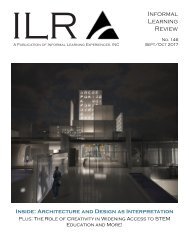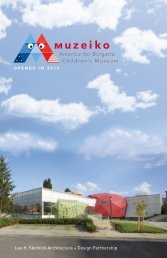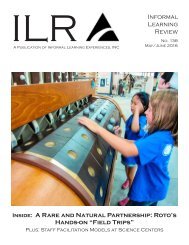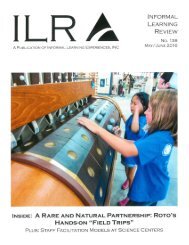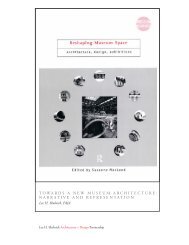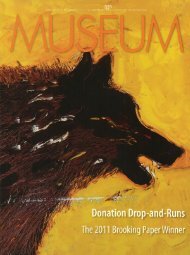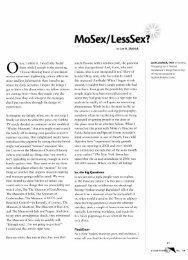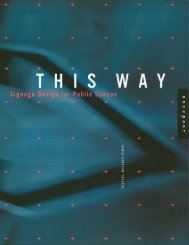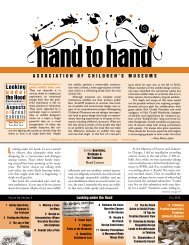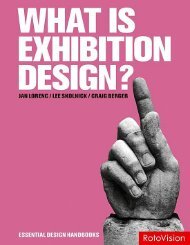Beyond Narrative
- No tags were found...
Create successful ePaper yourself
Turn your PDF publications into a flip-book with our unique Google optimized e-Paper software.
<strong>Beyond</strong> <strong>Narrative</strong>: Designing Epiphanies<br />
And witness the emergence and growth of conferences and programs on narrativity, which further<br />
dissect the subject into diverse aspects of the overarching theme. A recent conference held by the State<br />
University of New York, Stony Brook, was entitled ‘Narrativity’ and included sessions on the ‘Implications<br />
of the Temporal and Spatial Nature of Hypertext <strong>Narrative</strong>’ and ‘Metaphor and Memory: Nietzsche’s<br />
<strong>Narrative</strong> of Self-Overcoming’. 7<br />
In the 1970s, the profession of medicine decided that its strictly scientific approach to problem-solving<br />
needed to begin taking into account the specific psychological and personal history of patients. Thus<br />
was born the narrative medicine movement, which demands an understanding of the highly complex<br />
narrative situations among doctors, patients, colleagues and the public, and concerns itself with the<br />
phenomenal form in which patients experience ill health and, ultimately, allows for the construction of<br />
meaning. It aims not only to validate the experience of the patient, but also to encourage creativity and<br />
self-reflection in the physician.<br />
Perhaps less surprisingly, the field of music has embraced the use of narrative. From the program music<br />
of Saint-Saens, Ravel and Debussy, to opera, to movie scores, to the recognition by Professor Fred Maus<br />
in his essay ‘Narratology’ that in the late 20th century, music theory and criticism began to explore the<br />
possibility of narrativity in non-texted, non-programmatic music. 8 He observed that these studies lie not<br />
just at the intersection of music theory and criticism, but also of semiotics and the philosophical study of<br />
expression and representation, and that one of the most compelling aspects of the relationships among<br />
these fields stems from their shared purpose of communication.<br />
In ‘The <strong>Narrative</strong> Construction of Reality’, Bruner regales us with a list of others who have been working in<br />
what he calls ‘the vineyards of narratology’, including anthropologists, psychologists, linguists and literary<br />
theorists. 9 I could go on and on. As I said before, it is difficult to find an area of study or life which has not<br />
been enveloped by, or filtered through the seemingly limitless fabric of narrative.<br />
I guess it’s time to set the record straight. I didn’t actually set out here to trash narrative. Unlike Antony’s<br />
treatment of Caesar, I’ll probably do more praising than burying. As I mentioned earlier, narrative has<br />
been of great help to me in formulating and understanding an approach to making spatial experiences.<br />
But let’s be clear about one thing. <strong>Narrative</strong> can never be an end in itself. Our job as designers is to<br />
interpret.<br />
7 ‘Narrativity: 2nd Annual Philosophy and the Arts Conference’, New York: Stony Brook University, Masters in<br />
Philosophy and the Arts Program, March 2009.<br />
8 F. Maus, ‘Narratology, narrativity’, New Grove Dictionary of Music and Musicians, 2nd ed.<br />
London: Macmillan, 2001.<br />
9 J. Bruner, ‘The <strong>Narrative</strong> Construction of Reality’, Critical Inquiry, Autumn 1991, vol. 18, no. 1, p. 5.<br />
3



